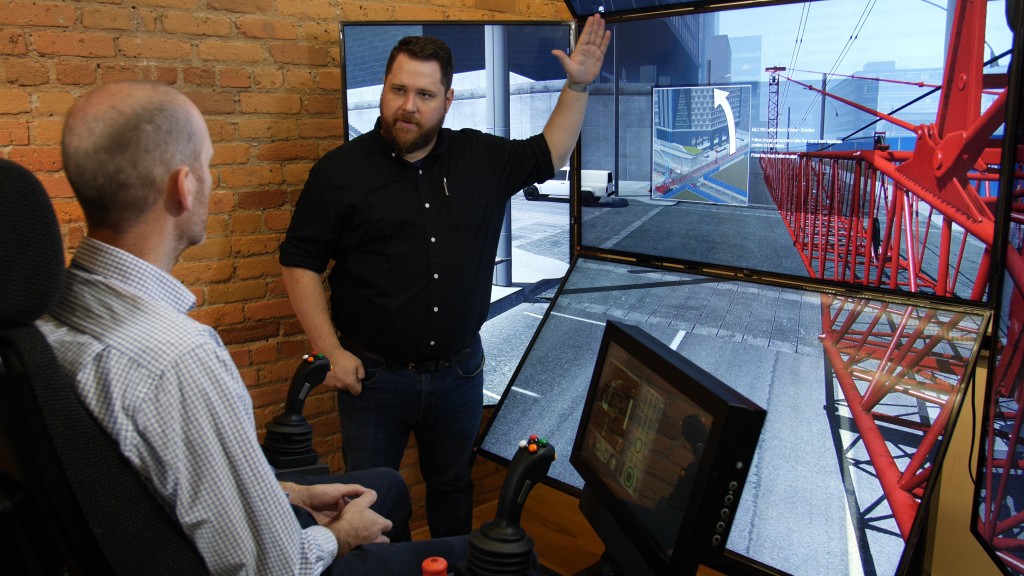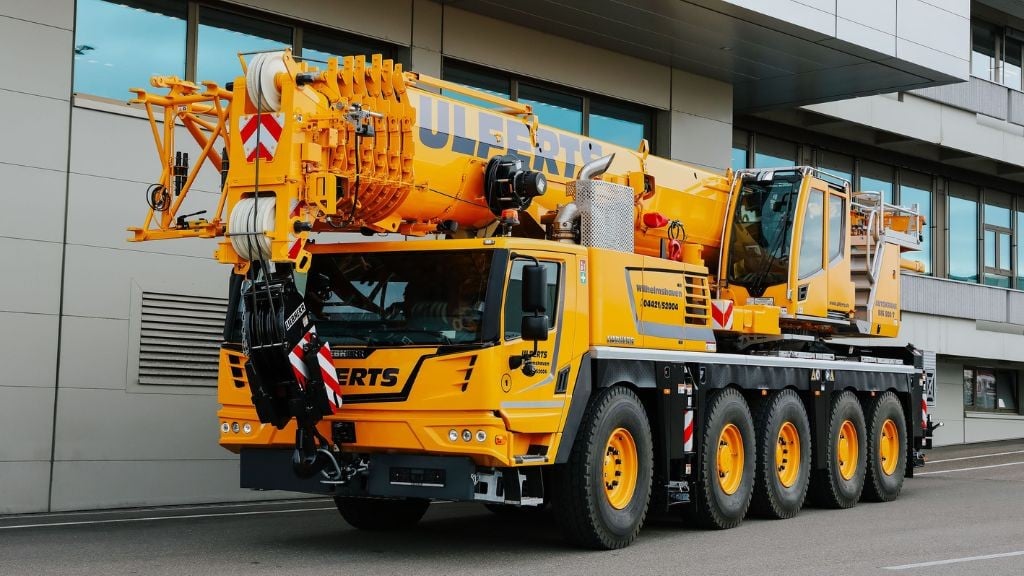CM Labs launches first and only crane simulator approved by city officials for operator qualification

The City of New York mandated that operators have specialized training on cranes with booms 300' and longer. In order to enhance training methods, Local 14 of the International Union of Operating Engineers (IUOE) looked for a simulator to effectively and safely train Operating Engineers.
To assist with this, CM Labs developed a custom simulator to the exact specifications of the client and manufacturer. This solution also captured attention at the highest level, becoming the first and only simulator approved by city officials for operator qualification.
"People recognize that this is a dangerous business; and we've made safety our top priority," said Training Director, Tom Gordon. "OSHA has very stringent safety guidelines and New York City has requirements that exceed those. Simply put, we're responsible for the safety of our workforce and people in and around the job site, and we take that very seriously."
Because large cranes are most often used within urban settings, training opportunities were not always available or practical. In the past, this entailed locating a specific crane in service and hoping to find time for closely supervised instruction. "You can imagine how stressful and difficult it would be to make that your first time in the seat," explained Gordon.
A few years earlier, while attending a tradeshow, Gordon had been introduced to CM Labs and the company's simulators. Impressed by the level of detail, he quickly recognized the value of simulators as training tools. Since that time, the union's training school has acquired several CM Labs heavy equipment simulators.
"Experiencing the controls, forces, inertia, twisting, and movement of a crane, are critical to understanding the reaction differences between a 200' and 300' boom," said Gordon. "Our top priority was to provide operators with detailed training for the procedures of erection and lay-down of a 300' boom or luffing jib. These are dangerous steps in crane operation, and we had to get it right."
Requirements were so exact and critical that some questioned whether such detail and complexity could be adequately simulated. "We were skeptical," admitted Gordon. "We weren't convinced that a simulator could realistically reproduce the angles, point of jackknife, controls, vision, rigging, loads, cables, and a hundred other things."
Creating a training simulator that would provide a crane rating had never been done. Success would rely on capturing the real-world reactions of the complex equipment while reflecting the operator's working knowledge of a specific crane type, model, and configuration.
"This was an extremely complex project," noted CM Labs Director of Product Strategy, Drew Carruthers. "We modeled the crane's inner workings exactly - every segment, every wire, each component. We had to identify what could behave how, and why; and then model those consequences exactly. Our simulations had to allow the equipment to be pushed to its limits safely without exceeding the tipping point."
Engineering specifications and other information supplied by the manufacturer would help developers create a model of the crane - along with each of its individual components. This allowed Carruthers and his team to realistically capture the relationship between all the machine's parts. This level of detail was used to identify and simulate the steps of what happens when everything goes well, along with the consequences when things don't - and ensure that the simulator's reaction would mirror that of the crane.
"This was truly a game changer," said Gordon. "It's such an efficient tool, it adds another dimension and is an excellent supplement to our already stringent training protocols. Our people spend days on the simulator; and I'm not talking about just new operators. These are licensed operators who haven't operated cranes in that specific configuration and want to get comfortable with how it reacts."
Adding the simulator to its training arsenal allows Local 14 to serve operators at all levels. "I think most simulators are used to train people who are just starting, apprentices, newcomers to the business," explained Gordon. "We're now able to provide advanced training for our journeyman and licensed operators who have been running cranes for years."



